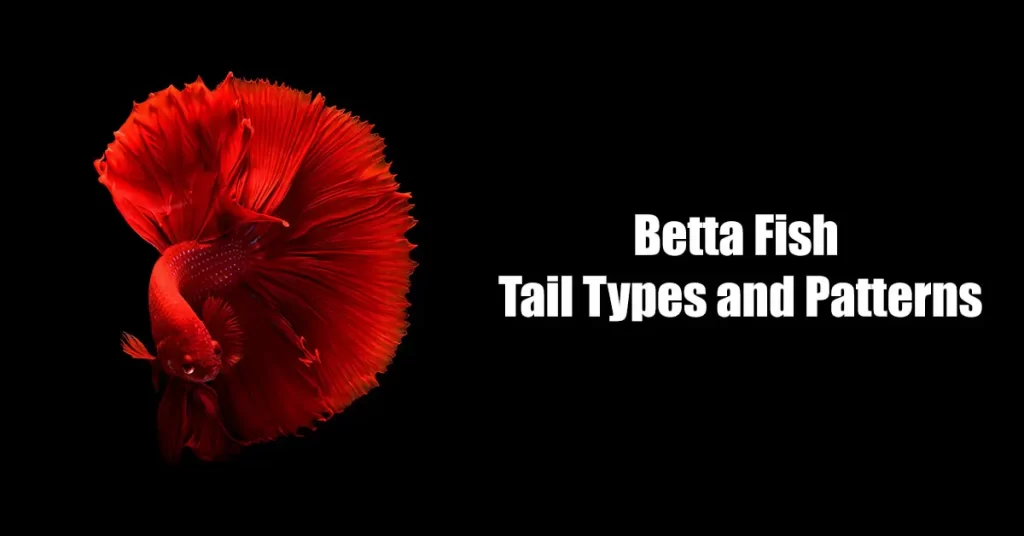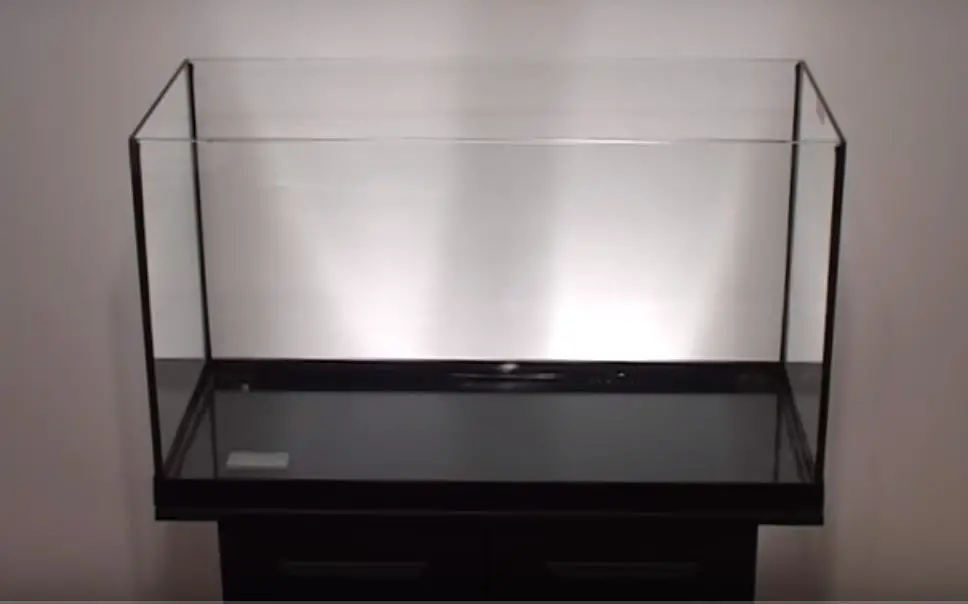Are you tired of common fish colors and shapes? Well, here we are today to introduce you to wide choices of colors, color patterns, and fin patterns of Betta fish to make your tank more exciting and colorful. Siamese fighting fish, commonly known as Betta fish, is a species with vibrant varieties of colors, modification in fin patterns, and diversification in color patterns. In this article, we will be focusing only on the variation of fin patterns i.e., Betta fish tail types and patterns, that we can find in these species.
If you are thinking of adding more unique fish in your tank, then Bettas are the species you can opt for. You will have so many options to choose from that it might put you in a huge dilemma. All breeds are beautiful but some can be difficult to look after. This is because they are bred in captivity to produce more vibrant colors and patterns. You can find Bettas with semi-circle tail to round tailed or with triangular appearance to crow-like appearance. The availability of multiple beautiful options makes Bettas popular among fish-keepers. But, if you are a starter, I would recommend you to not go for them at once. They are not ‘starter-fish.’
Recommended: Also Read – Betta Fish Colors and Color Patterns
Introduction: All about Betta Fish
The Siamese fighting fish is native to Cambodia, Laos, Vietnam, and Thailand. These fish have been popular since around the mid-1800s. The name ‘Siamese fighting fish’ has been given to them due to the aggressive nature of male Bettas towards other bettas. But, they are well-known for their unique, diverse, and ravishing appearance. Moreover, they are average-sized fish that can grow up to 2.5 inches, excluding the tail part. With proper care, this species can live between 3 to 5 years. The proper care for Bettas includes stable water flow with a temperature between 72°F and 82°F, the pH level of 6.5-7.5, natural or artificial light during the day only, and live plants or hiding places in your tank. These factors contribute to imitating a natural habitat for them.
Tank
It is a piece of widespread news that Bettas can live in small spaces, like a bowl. No! This is a huge myth. Bettas need a tank size of 5 gallons or more. I would recommend a 10 Gallon Tank. They enjoy free swimming spaces with some decorations like plants, rocks, or ceramic objects, but all with blunt edges.
Moreover, make sure to cover your tank, as they have a notorious habit of jumping out of it. Change the water of your tank regularly, and I would even recommend using an aquarium filter. To avoid the drastic change in the water current during this process, keep about 1/3 water in the tank and replace the water each week. A 100% water change is required once a month. Also, do not fill your tank up to the maximum volume because Bettas need water surface to inhale air and are surface feeders.
Diet
These Siamese fighting fish are picky carnivores. They can be fed pellets, flakes, meat, fish, shrimps, but avoid other tropical fish food. During each feeding, serve only 2-3 pellets if you feed them twice a day; 3-4 pellets if you feed them once a day.
Tankmates
Known for their aggressive behavior, the male Bettas can attack both male and female Bettas. You can add community fish along with your Betta if the tank is spacious. Avoid adding two male Bettas in the same tank, but you can group your female Bettas in five or more. Be careful about the tank size for your Bettas though. Follow the rule of thumb, or you can learn more about ‘How to take care of Bettas’ in our previous article.
15 Betta Tail Types and Patterns
Like I mentioned earlier, there are varieties of patterns you can find in these species, Betta fish. Hence, they are in demand due to their variation in shapes and colors. These fish can be classified based on their color, pattern, and tail type. Moreover, the variation is so large in number that is can confuse an experienced betta fish keeper too regarding the similarity of the species.
Focusing only on the tail patterns as the distinguishing factor, we will be discussing from the relatively plain to extraordinarily unique shapes, and from commonly seen to rare ones.
1. Veil Tail (VT) Betta
The Veil Tail, abbreviated as VT, is the most common type of Tail that you can find. It has a beautiful long and flowing tail, which is asymmetrical. Their anal and dorsal fins are similarly large, long, and flowing. The female Bettas are commonly longer and rounder than male Bettas.
These Veil Tail Bettas are available in almost every color, and some common color patterns found are butterfly, bi-colored, dragon scale, et cetera. Marble and koi color patterns are among the rare color patterns.
Talking about their nature, they are not much aggressive and like to live in a sorority. But, it is suggested to not house them with other Bettas. Male Veil Tails can grow from 1.75″-2.25″, whereas, females can grow from 1.5″-2″.
They are quite easy to breed, hence, the popularity. These Bettas live better in a tank with a gentle current as they are weak swimmers.
Price: $2-$3 (For female), $2.5-$5 (For male)
2. Crown Tail Betta
The Crown tail, abbreviated as CT, is a Betta with reduced webbing between extended rays of the fins, which gives them a distinctive spiky appearance. This creates long spikes on anal, dorsal, and caudal fins. The ray extensions can be double, triple, crossed, or quadruple. The reduced fin webbing makes them less prone to fin biting and fin rot issues.
These Bettas are found in almost every color, with color patterns like a butterfly, piebald, grizzled, bi-colored, or dragon scale. These Bettas have rare marble and koi color patterns.
The females have shorter fins than males, but both of their fins have small fringes on them. Male Crown Tails can grow from 1.75″-2.25″, whereas, females can grow from 1.5″-2″.
They are also more prone to diseases and injury, so be careful about water conditions for your Crown Tails. After Veil Tails, they are the second most common variety of Bettas. Additionally, Crown tails are more aggressive and strong swimmers than veil tail bettas.
Price: $3-$5.50 (For female), $3.5-$4.50 (For male)
3. Comb Tail Betta
Comb Tail Betta is quite similar to Crown Tail and does not have a distinct shape of its own. It has fin rays that extend beyond the fin webbing (which reaches more than 2/3 of the way up the Tail), giving them a spikey appearance. Their fins look like a comb, hence the name Comb Tail. Since they lack support between fin rays, tail curling can be seen in some of these fish. Moreover, they have a high probability of breaking the rays in their Tail. This can make locomotion difficult for me.
Price: $3-$5
4. Delta Tail Betta
A delta tail betta is a betta with an appearance similar to both veil tail and Halfmoon, with a tail resembling the Greek letter delta (Δ). Their Tail is narrow toward the body and widens as it proceeds towards the edge, resembling a triangular shape. They have a symmetrical tail; that is, if they were to be separated horizontally across the center, the Tail above and below the line would be of the same size. However, the Tail fans out way less than 180 degrees.
Delta tails are found in every color, with color patterns like butterfly, solid, grizzled, piebald, or dragon scale. These Bettas have rare marble and koi color patterns. They can be aggressive, but this behavior varies on every individual. They are popular for their triangular Tail and a wide variety of choices. Delta tails can grow from 1.75″ to 2.25″.
Price: $6.50-$8
5. Super Delta Tail Betta
Delta tail and Super Delta tail are quite similar to each other. The only differentiating characteristic between the two of them is that the tails of Super Delta can spread nearly up to 180 degrees, but not a complete 180 degree like in a Halfmoon Betta. They are peaceful and are easy to take care of. Super Delta tails can grow from 1.5″ to 2.5.”
Price: $7-$10
6. Double Tail (DT) Betta
Double Tail, abbreviated as DT, is a Betta possessing double caudal fin separated at the base. The two fins are not necessarily even and are large with a short body. The double Tail is seen due to mutation. They are prone to swim bladder disorders, fin rot, fin biting, bloating, and obesity. But, they are available in all colors and various color patterns. Their aggression depends on their ancestry. They can grow from 1.75″ to 2.25″.
Price: $6.50-$16
7. Half Moon (HM) Betta
Half Moon, abbreviated as HM, are the most desired Bettas these days. The name “half-moon” is given to those Bettas whose Tail flares out to an exact 180 degree, giving a semi-circle which resembles the shape of a half-moon. The dorsal and anal fins are larger than in other Bettas, with a round shape of the dorsal fin and a curtain-like resemblance under their belly by the anal fin. Though they are available in all colors and varieties of color patterns, the majority of butterfly patterned Bettas have a half-moon tail.
Half-moon Bettas are bred in captivity for commercial purposes. They have a high chance of facing tail damage and tearing. This species can be more aggressive than Veil Tails.
Price: $6.50-$16 (for male), $10.50-$13 (for female)
8. Over Half Moon (OHM) Betta
Over Half-Moon Bettas are similar to Half Moon Bettas. They are an extreme version of HM. The only distinguishing factor between these two is that the Tail of OHM fans out larger than 180 degrees. This gives the shape of the fins that is larger than a semi-circle. They are also available in all colors with some common color patterns like solid, butterfly, bi-color, and piebald.
9. Half Sun Betta
The selective crossbreeding of half-moon tail and the crown tail is half sun tail type betta. It has fins that can flare up to 180 degrees like that of a half-moon with rays slightly extended past the webbing, but not as much like in a crown tail. Its key characteristic is its frilled Tail that looks like a sun, which makes it unique and popular among the keepers. They are available in all colors and common patterns like solid, grizzle, dragon scale, full mask, et cetera. They are more aggressive than Veil tails.
10. Plakat Betta
Plakat, abbreviated as PK, is a Betta popular for its short, rounded, or short slightly pointed Tail. The name “Plakat” is a derivation from a Thai word “plakad” which means fighting fish. They were bred specifically for fighting, hence giving them large and strong bodies with shorter fins. Despite their extremely aggressive nature, they are still available in all colors. Moreover, they are found in all color patterns, including the marble and koi patterns, making them desirable by both long-time keepers and newcomers. These strong swimmers are pretty well known for their habit of jumping out of their tanks. Even a small hole for a filter or air hose can be their gateway to escaping. Despite these behaviors, they are the easiest to pet. They have a very low probability of fin rot and other health risks.
Except for the traditional Plakats, there are four more types of tail types due to selective breeding, namely half-moon, over half-moon, delta, and spade tails.
Price: $12-$34
11. Rose Tail Betta
Rose Tail Betta is a variation of half-moon betta, but with more ruffled edges and excessive branching on the rays. This gives them a beautiful rose-like aesthetic. The fin spreads larger than 180 degrees. They are available in all colors and various color patterns like butterfly, solid, and bi-color. Due to their heavy Tail, they are found more in their resting spots than swimming around. Their rays have a good chance of breaking, which makes them prone to infection. Tail biting is also common in Rose Tails. Due to their genetics of half-moon betta, they can be quite aggressive.
Price: $16-$20
12. Feather Tail Betta
The Betta with tail-like of a Rose Tail, but with more branched and ruffled appearance, is Feather Tail Betta. Particularly, the anal, dorsal, and caudal fins are extremely ruffly. They have similar health issues to Rose Tail. The extra rays, branching, fingers of rays, and webbing gives them a feathery look, hence the name Feather Tail Betta.
Price: $4
13. Spade Tail
Spade tail Betta possesses caudal fins that look like a spade from a playing card. It is a rare tail type that is broad towards the body and narrows down to a point at the edges of the fins. They are a variation of Veil Tails. These Bettas are not found much in the aquarium stores anymore but were quite common in the early 90s.
15. Dumbo Ear Betta
Dumbo Ear Bettas, also known as Elephant Ear Bettas, can have any type of Tail, but a specific type of pectoral fins. These ruffled fins resemble elephant ears. They are available in colors like red, turquoise, yellow, and bright blue in aquarium stores, but dull colors like gray, brown, and dark green in the wild. They are very less prone to tail biting and fin rot.
15. Round Tail Betta
Round Tails are similar to Plakats. They also have round fins, but longer and fuller than as seen in a Plakat. These Bettas are also considered similar to Delta tails, with just a difference in the shape of the Tail.
Conclusion
Bettas can be a great addition in your tank, provided they have appropriate tank mates and living conditions. They can be difficult to look after, but they are worth the effort. Also, it should not be so hard to take care of them once you set a routine. These beautiful creatures enhance your tank, making it livelier. Moreover, the variation in the fins that we talked about makes them look like each one is of a different species. Avoid the myths that you hear about Bettas and focus on the facts. This can save you from losing your Betta to health issues or carelessness. Always keep an eye out on them.
Happy fishkeeping!






